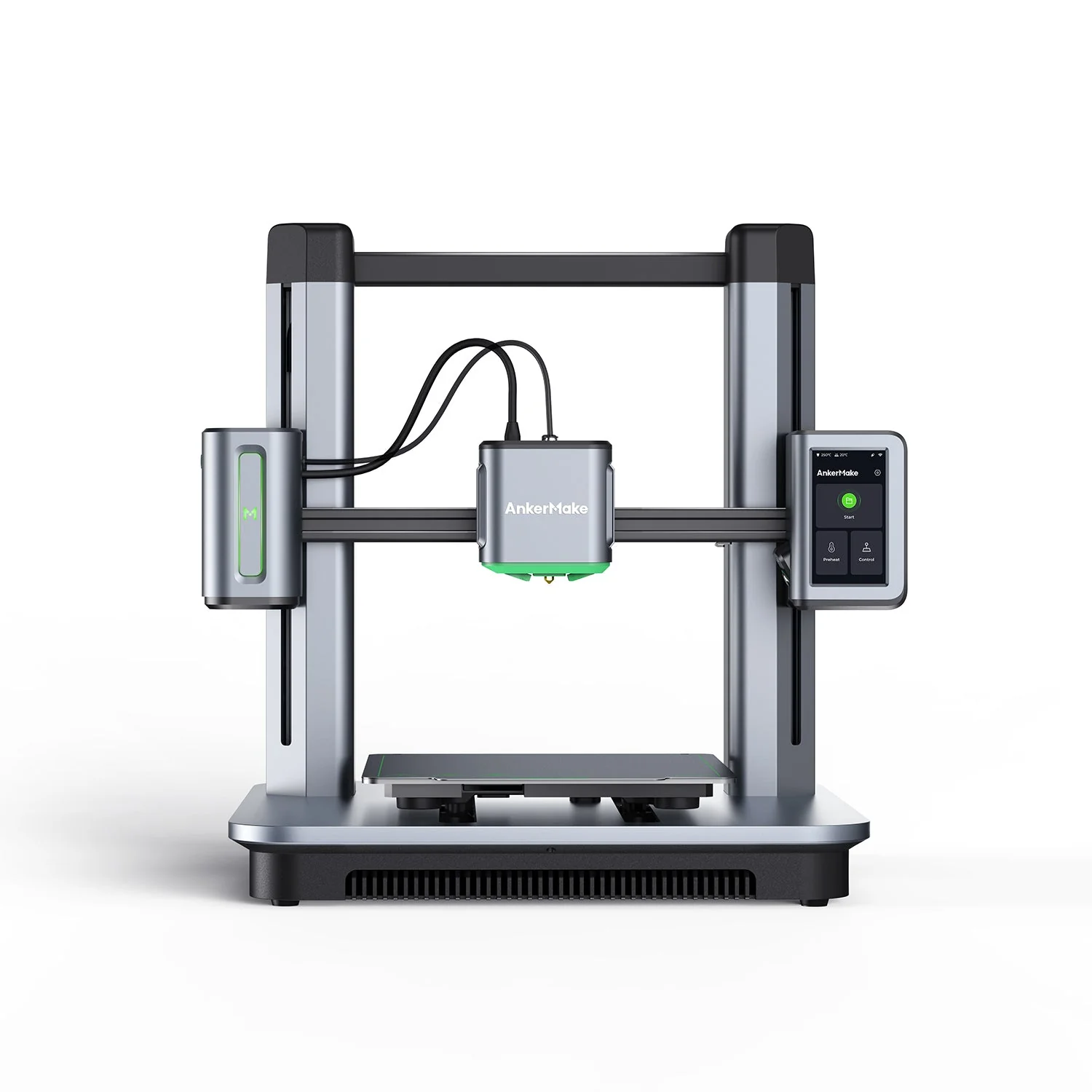Compare M5 vs H2D
Comparison between the best 3D printers
Choose the best 3D printer at the best price. The cheapest 3D printers are here.
Buy a 3D printer here with 3D Fila.
 |
 |
|
| Model | M5 |
H2D |
| Printing Material | Filament | Filament |
| Buy Filament for AnkerMake M5 | Buy Filament forBambu Lab H2D | |
| Estimated price | $497,00 | $1899,00 |
| Manufacturer | AnkerMake | Bambu Lab |
| Release Year | 2023 | 2025 |
| Print Volume [mm] | 235x235x250 | 350x320x325 |
| Printer Size [mm] | 502x438x470 | 492x514x626 |
| Weight [kg] | 12,6 | 42,3 |
| Power Loss Recovery | YES | YES |
| Enclosed printer | NO | YES |
| Bed Leveling | Automatic | Automatic |
| Filament End Sensor | YES | YES |
| Bed type | Heated | Heated |
| Power supply system | Direct Drive | Direct Drive |
| Standard nozzle | 0,4 | 0,4 |
| Maximum Nozzle Temperature [°C] | 260 | 350 |
| Maximum Bed Temperature [°C] | 100 | 120 |
| Maximum printing speed [mm/s] | 500 | 600 |
| Filament holder | YES | YES |
| Camera for supervision | YES | YES |
| Recommended filaments | PLA, PETG, ABS | PLA, PETG, ABS, ASA, TPU, PVA, Nylon (PA) |
| Recommended slicers | AnkerMake Studio (macOS, Windows), Simplify3D, Ultimaker Cura, PrusaSlicer | Bambu Studio |
| Maximum Resolution [mm] | 0,1 | 0,01 |
| Processor | ||
| Display | Touchscreen 4,3'' | Touchscreen 5'' |
| Power Supply | 350 W | |
| Connectivity | Wi-Fi, USB-C, OTA Upgrade | Wifi, Bambu bus, Cartão SD |
| Operating systems | Windows, Linux, Macbook | Windows, Mac, Linux |
| Date of registration in the system | 2024-07-08 | 2025-03-31 |
| Release date | 2023 | 2025 |
| Extra features | The AnkerMake M5 printer stands out for its impressive print speed, reaching up to 500mm/s. It features AI print monitoring, an integrated camera for creating timelapses, auto-leveling bed with pressure sensor, direct extruder, flexible PEI-coated build plate, and Wi-Fi and USB-C connectivity. Assembly is quick and easy, and the printer is designed to deliver high print quality and ease of use. | Bambu Labs H2D combines high-speed 3D printing with a chamber heated up to 65 °C, dual extrusion with automatic nozzle switching, an AMS for filament drying and exchange, and AI sensors that detect failures. It offers optional laser and digital cutting capabilities, features intelligent calibration through computer vision, vibration control, enhanced fire safety, and real-time camera monitoring. |
| Support for multiple colors and materials (AMS and CFS) | NO | YES |
Notes * |
||
| Cost-benefit | 7 / 10 | 7 / 10 |
| Hardware | 4 / 10 | 8 / 10 |
| Tela | . | . |
| Print volume | 3 / 10 | 4 / 10 |
| Performance | 4 / 10 | 5 / 10 |
Conclusion |
| In comparing the AnkerMake M5 and the Bambu Lab H2D 3D printers, several key factors distinguish the two models, particularly in terms of performance, capabilities, and price. The AnkerMake M5 is notably more affordable, making it an appealing choice for hobbyists and those new to 3D printing. It boasts impressive print speeds of up to 500 mm/s, a feature that enhances efficiency in smaller projects. However, its print volume is more limited compared to the H2D, and it does not support advanced features like multi-material printing. On the other hand, the Bambu Lab H2D, while significantly more expensive, offers enhanced print volume and versatility with its ability to print using various materials, including more specialized options not supported by the M5. The presence of advanced features such as dual extrusion, intelligent failure detection, and improved fire safety adds to its capabilities, positioning it as a more powerful choice for professionals or serious enthusiasts. Both printers include automatic bed leveling, power-loss recovery, and camera supervision, ensuring ease of use and reliability. However, the H2D's superior hardware and advanced features may justify its higher price for users who require the extra functionality. In conclusion, the choice between the AnkerMake M5 and the Bambu Lab H2D should be driven by individual needs and budget considerations. For those seeking affordability and a fast learning curve, the M5 is an excellent starting point. In contrast, for users who demand advanced features and the ability to handle a wider range of materials, the H2D offers greater potential, albeit at a higher investment. |

